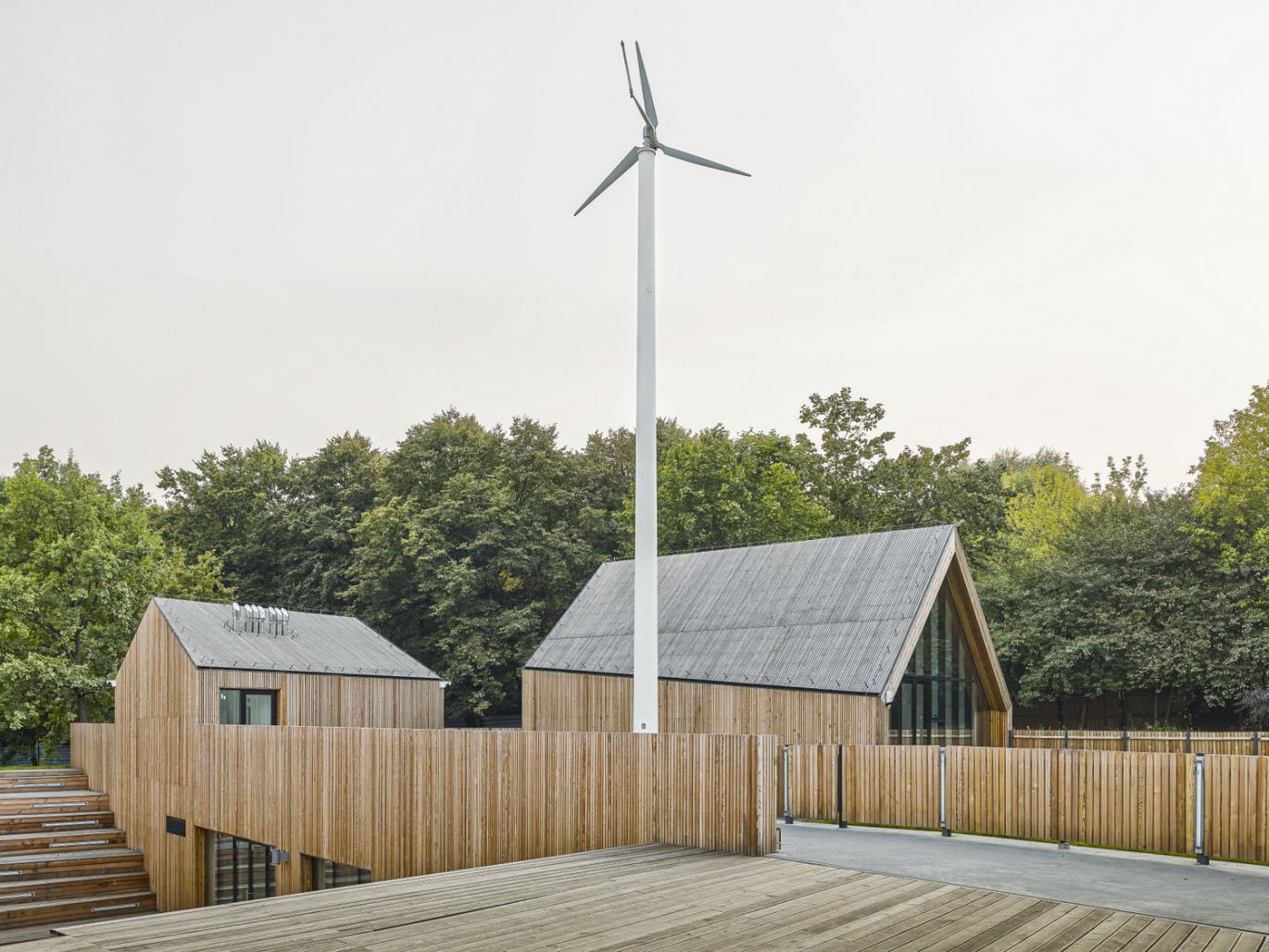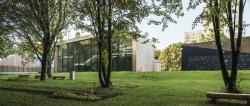CONTEXT
The final form of the Cultural Centre design was determined by two elements: the first, the situation and an urban context of the object, the second, its function defined by the programme. The existing, original cultural centre was also a source of inspiration, together with the adjacent ecological, educational farm and a survived country house at 7 Tarniny Street. A typical rural, low-density housing prevailed in the area of Służewiec until the early seventies of the last century. Then, throughout the course of a few years, in place of ploughlands, orchards and meadows where the sight of grazing cattle was quite common, high-rising blocks of flats, the tallest 11-storeys high, were being erected to become Służew on the Valley settlement. The designers of the settlement managed to preserve a green ravine along the brook banks, in spite of plans designating the area for single-family housing. Nowadays this place, a strip of green open space, is extremely precious both for the inhabitants and the ecosystem of Warsaw.
Logically, the first designing decision entailed consideration for the context of the area and the choice of housing forms which would be unintrusive and culturally substantiated.
An essential part of the project is such positioning of the building that allows local people for an easy access to the park but also encourages and invites them to make use of the facilities offered by the Centre.
FORM
By adapting a traditional form of a farmstead, the design is not only deeply set in the tradition and culture of the place, it also shows respect for the borders of urban and functional zones and in a way employs a sort of convention of childrens iconography. Due to placing the main function of the building on -1 level (below the ground), the groundfloor level has been treated as an open, public space where relativelly small, traditional in form and material houses are constructed. Each of them can be accessed from the area level, and each of them serves one function, e.g., an art workshop or a literature club. Fully glazed walls of the building overlooking the park on one side, Bach Street on the other, allow the strollers walking around the Cultural Centre to have a glimpse of activities taking place inside, not missing the view of the greenery of the Służew Brook area. Such layout of the building allowed for maximum connection of its interior with the surrounding. As it were, the premises of the Centre become public space of the city, the activities of the Centre reach beyond its borders.
CHARACTER
Accordingly, the architecture of the object is restrained and friendly; by using possibly contemporary means it tries to interconnect the traditional elements of urban layout with simple, natural finishing materials. An unpretentious building, submerged in the greenery, is supposed to be the background for events happening there. The present design bases on assumption that the architecture of an object fulfilling this sort of functions plays an immensely important educational and cultural role, e.g., by shaping esthetic and ecological awareness. Hence, the decision about introducing mini animal farm into the very heart of the Centre, the proposal of employing wind and solar energy as alternative sources and finally the layout of the object on the farmstead plan which can be read as an ethical approach to architecture with respect for the context of the place. The value of the chosen character of architecture and its reference to the topos of a farmstead lies also in its positioning in the city centre. Children visiting the Cultural Centre spend the majority of their time in typical, urban interiors, in the streets, shopping galleries, etc. Here, they have an opportunity of a direct contact with nature, they can spend some time with animals taking care of them or working in the educational garden, growing vegetables and fruit.
ENTRANCE
The basic part of the project and the main entrance into the building are placed on -1 level, which is accessed by amphitheatrical staircase from the entrance square. This submerged basin functions as a stage during theatrical, open-air performances. Its warm, wooden flooring looks inviting as a place for playing and relaxing between various activities. At the same time it can be easily disassembled for the maintenance of rain collector passing beneath. The whole programme consists of two, interconnected buildings, however, each of them can function separately.
2008
2013
Design: 2008,
Construction: 2013,
Size: 2100 sqm.
WWAA + 137Kilo
Marcin Mostafa
Natalia Paszkowska
Jan Sukiennik / 137Kilo
Maciej Kleszczewski
Wojciech Piwowarczyk
Anna Zawadzka



